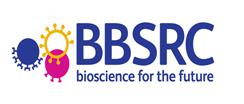The pH scale for measuring acidity/alkalinity; and indicators
This resource list provides some ideas for practical work exploring pH and indicators in KS3 chemistry.
Visit the practical work page to access all resources and lists focussing on practical work in secondary science: www.nationalstemcentre.org.uk/sciencepracticals
Stings and Things: an Investigation into pH
This is a great starting place for the teaching of the pH scale since it starts with something students are already likely to have experienced – being stung! It’s a nice investigation into why nettles sting which also nicely gets across some key themes about the nature of scientific investigation.
Students are introduced first to litmus paper to determine acidity and alkalinity before using universal indicator to give a more quantitative measurement. They use these methods to study a range of household chemicals before turning their attention back to stings and their remedies.
The sheet suggests students collect their own nettles, you might choose to delegate this job to a technician!
Make Your Own Indicator
Using red cabbage to make an indicator solution is a favourite keystage three activity and here the practical work is broadened so that students investigate a range of different plant material which you will either need to think about and provide beforehand or get them to collect as homework before the lesson. It leads on nicely after they have used litmus or another commercially available indicator.
This document assumes that students are working at home, so unless you set the whole activity as a piece of homework, you’ll want to replace saucepans with beakers and sieves with filter paper etc.
Teaching Ideas and Evidence in Science at Key Stage 3
This resource is in the form of a website so after reaching the page click on the “topics index” tab at the top and then choose “acids and alkalis” which is topic N.
The topic provides a series of three linked activities, culminating in an experiment, that are designed to develop and deepen student’s ideas about pH by linking them with reactivity. It’s probably most suitable for use with year nine and it would be a good activity to develop the skills of more able students. The site provides worksheets that the students can use.
pH is a measure of how many hydrogen ions (H+, hence the H in pH) an acid can produce. Teachers will note that the acids to be used are all the same concentration (2 moles per litre) but not all the same strength since they release different amounts of hydrogen ions. This is obviously more information than students will require but they will find it helpful to start to realise that concentration and strength are not quite the same thing.
Indicators in Chemistry
A smashing lesson starter that’s highly recommended. The introduction will really get students thinking and make them want to know more. It therefore leads very well into students own practical work where they try to form solutions the same colour as the traffic lights, red, green and orange. As they soon start to find out, it’s more difficult than it sounds and they really have to develop good practical skills if they are to end up with that elusive orange solution.
Teacher Paul Grooby’s film is short (5min) and self-explanatory but you will need to draw up your own equipment list for technicians.
World Oceans Day *suitable for home teaching*
Ocean acidification is intrinsically linked with the greenhouse effect but it is likely to be something that students don’t know much about. It provides a good context for the study of acidity and pH with strong links to global citizenship. You could teach this lesson on 8th June which is Annual World Oceans Day but it’s a good stand-alone lesson any time of the year.
This lesson plan challenges students to apply what they know to a new situation and it comes complete with presentation (that includes some great photographs) and student worksheets. It’s relevant, up to date and good at showing scientists at work today.
There is a document entitled “ocean acidification process” that provides background information for teachers. You should note that the lesson plan document only contain information on odd pages (1, 3,5). The instruction sheets contain nice colour photographs which would print well but, if you’re working to a budget, they may not photocopy very well.
Dry Ice Demonstration
This is a very memorable demonstration and it’s well worth doing if you can get hold of dry ice. The film does include some ideas about how to obtain dry ice but if all else fails try searching on the internet for dry ice cleaning companies local to you. Of course, having got your dry ice, you’ll be able to do lots of other activities with it too and with several other classes: its sheer memorability makes it worth the money.
Before carrying out the demo as shown here, it is recommended that a very small amount of dry ice is placed on benches so that students can literally watch it “disappear” in front of their eyes. Warn students not to hold it though as it will burn their skin and be particularly careful that it can’t fall into their laps. You might want to introduce students to the concept of sublimation and explain that carbon dioxide is one of very few chemicals that turns directly from a solid into a gas without going through the liquid phase.
Instead of carrying this out as a large scale demonstration, it is perfectly possible for students, perhaps working in pairs, to prepare solutions themselves that are just alkaline (ie the indicator has only just turned purple) using 250cm3 beakers. The teacher can then walk around the classroom dispensing the dry ice directly into each beaker.





